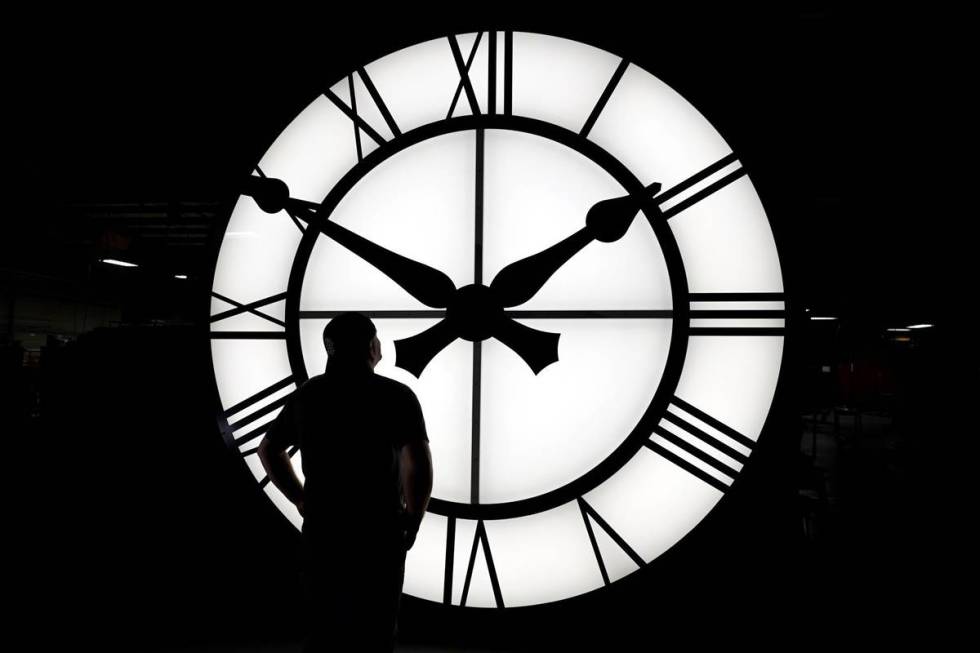VICTOR JOECKS: Daylight Saving Time should be permanent

The annual ritual of moving clocks forward an hour makes this the worst weekend of the year. It doesn’t have to be like this. Make daylight saving time permanent.
Time is a foundational element of civilization. Modern society couldn’t function as it does without standardized time. It’d be a logistical nightmare for flights, the military, businesses and television broadcasts.
But time hasn’t always been so uniform. The federal government didn’t mandate national time zones until 1918. In many ways, the government was following private industry. In 1883, North American railroads came together to create a shared time system to improve coordination. Many local governments, including states, were using the traditional four time zones before federal action.
One benefit of time zones is keeping the local sunrise in the morning and sunset in the evening. For instance, on Saturday, Las Vegas’ sunrise was at 5:53 a.m. Pacific time. In Boston, sunrise was at 5:59 a.m. Eastern time. Without time zones, Las Vegas’ sunrise would be at 8:53 a.m. if Eastern time were used throughout the United States.
The problem with standard time — what the country uses from November to March — is when the sun goes down. On Saturday, Las Vegas’ sunset was at 5:46 p.m. That’s early. It’s worse in the winter. For more than 30 days in November and December, the Las Vegas sunset is before 4:30 p.m.
Given that the normal workday is from 8 a.m. to 5 p.m., the most some adults see the sun during winter is when they’re driving to work. Granted, many people are now working from home or have irregular hours, thanks to Las Vegas’ unique economy. But most people aren’t getting up at 6:30 a.m. to catch a few extra rays. In contrast, most people are awake at 5 p.m.
Kids have less light, too. Early sunsets don’t leave much time for children to play outside before it gets dark.
Historically, some of the biggest opponents of daylight saving time were farmers, who wanted the extra hour to get their crops to market. Few people today, however, are buying farm-fresh produce and dairy. The American Farm Bureau Federation currently doesn’t take a position on the issue.
Another concern is that children will have to walk to school in the dark. But some local schools start around 7 a.m., which shows kids can get to school safely even when there’s low light.
There’s empirical evidence that people enjoy the extra hour of sunshine. TV ratings tend to fall the week after DST starts. Studies have found DST reduces childhood obesity and increases adult outdoor activities. The Brookings Institution even found the extra daylight reduces robberies by 7 percent.
The thing people seem to dislike the most about DST is the disruption. It’s a pain to adjust your sleep schedule and body clock. It likely hurts overall health, too. A study from Sweden found an increase in heart attacks after DST. Other studies have found the switch increases depression and traffic and workplace accidents.
You can have the best of both worlds. Set the clocks ahead and leave them that way. This isn’t a new idea. In 2015, the Nevada Legislature approved a resolution asking Congress to allow states to do this. More than a dozen states want to do the same, but they need congressional action. On Tuesday, Sen. Marco Rubio and seven other senators, including three Democrats, introduced a bill to do just that.
It’s time to let the sun set on standard time.
Victor Joecks’ column appears in the Opinion section each Sunday, Wednesday and Friday. Listen to him discuss his columns each Monday at 3 p.m. with Kevin Wall on AM 670 KMZQ Right Talk. Contact him at vjoecks@reviewjournal.com or 702-383-4698. Follow @victorjoecks on Twitter.